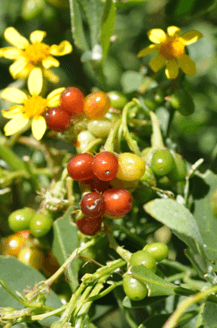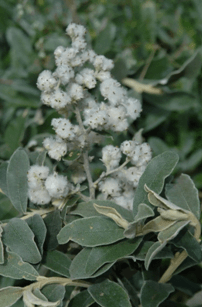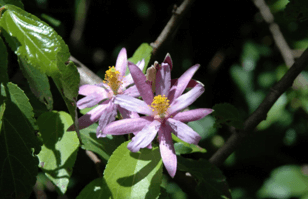Hardy plants for a low-maintenance coastal garden Plants in coastal gardens have to withstand seasonal gale-force winds, resist the damage caused by salt-laden breezes and grow in sandy soils that not only reflect the heat but can be unstable, water repellent and so free draining that they retain little moisture. Plants selected for gardens at holiday homes also need to be able to endure periods with little water. This sounds like a tall order, but there are attractive plants which fit the bill; pick the right ones and you’re sure to have success gardening at the coast. Ideal characteristics for coastal plants
Three reliable plant choices BIETOU OR TICK BERRY (CHRYSANTHEMOIDES MONILIFERA)
This fast-growing plant often self-seeds and is ideal as a pioneer plant; use it as a bushy filler to be removed once slower-growing, permanent shrubs and trees are established. In late winter it’s covered in bright yellow daisy-like flowers, which attract many insects and are followed by clusters of yellow, red and black fruits which are a magnet for frugivorous birds. Height: 2–3m. WILD CAMPHOR BUSH (TARCHONANTHUS CAMPORATUS)
Although the leathery foliage of the camphor bush may appear to be a dull olive green, the tree comes to life when the wind flips the leaves to reveal their silvery underside. It has a wonderful aroma of camphor and the creamy white sprays of flowers are followed by fluffy, cottonwool-like seed heads which birds collect to line their nests. Camphor bushes like sun and can be clipped into a hedge or trained as a shrub or tree. Height: 3–5m. CROSS-BERRY (GREWIA OCCIDENTALIS)
This attractive, drought-tolerant plant occurs in a wide range of habitats throughout South Africa. Its spreading branches are dotted with attractive star-like lilac flowers from spring to late summer. The four-lobed edible fruits which follow are symmetrically arranged to form a cross, hence the common name, and attract many birds while the flowers attract butterflies. Train it as a hedge, a small tree or allow it to scramble and spread naturally. Height: 3–6m. CREDITS: TEXT AND PHOTOGRAPHS MARIANNE ALEXANDER
|






